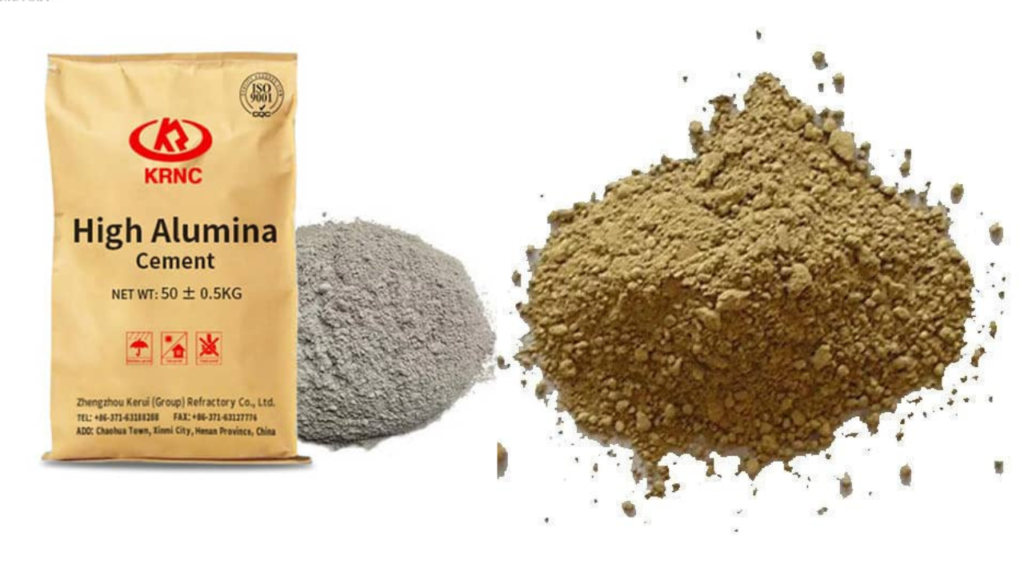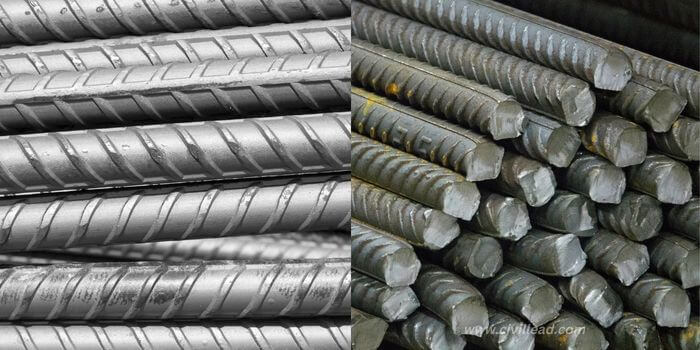High Alumina Cement takes on a thick texture and gains strong refractory, quick-hardening, and chemical-attack resistance qualities when it comes into contact with water.
This kind of cement is made by calcining limestone and bauxite to produce clinkers, which are then crushed. Bauxite is the name of an aluminum ore. It specifies that the total alumina content cannot be less than 32 percent and that the ratio of alumina to lime by weight must be between 0.85 and 1.30. This cement is marketed under the name Lumnite in America and goes by Cement Fondu in England.
Qualities of High-Alumina Content Cement
The properties of this cement may be briefly summarised as follows:
- High alumina cement has a low pH.
- It has a high refractoriness.
- In sulfuric acid, it holds up rather well.
- It hardens rapidly.
- It is less reactive than hydraulic lime or alumina.
- It acts as a bonding agent when added to refractory castables because it forms a ceramic bond at high temperatures.
- It is very resistant to chemical corrosion. As a result, it’s also often used in the construction of factory drains, sewage pipes, water pipes, and industrial chimneys.
- Advantages of High Alumina Cement
What Makes High Alumina Cement?
Constituent composition as a percentage.
- 3-8% silica
- Alumina 37%–41%
- Lime 36–40%
- Iron Oxide: 9–10%
- Titanium 1.5-2%
- Magnesium <1%
- 1% of Insoluble Resides
Production Process for High Alumina Cement
A distinct process is used to make high alumina cement as opposed to ordinary portland cement. Lime and bauxite are the fundamental ingredients. The fundamental materials are crushed into 100 mm-long pieces after being blended in the required proportion. The fusing point, 1600°C, is reached by heating these lumps in a kiln. After the molten material falls onto a steel plate, it is delivered to a revolving kiln to cool. Subsequently, the clinkers undergo processing in tube mills to achieve the ultimate fineness of 2250 cm2/gram.
Qualities of High Alumina Content Cement
This cement has the following characteristics:
- It is very resistant to chemical attacks.
- The pH is low.
- It is used in the construction of factory drains, sewage pipes, water pipes, and industrial chimneys because to its strong resistance to chemical corrosion.
- This cement’s refractive index is quite high.
- It is resistant to high sulfuric acid.
- The hardness of this cement sets quickly.
- Because ceramic bonds occur at high temperatures, it acts as a bonding agent when added to refractory castables.
The following are some advantages of high-alumina cement:
- The initial setting time of this cement is more than 3.5 hours. Five hours or so are needed for setup in total. It thus adds time to the mixing and placement processes.
- It can withstand changes in temperature.
- As it settles, a lot of heat is created. It is thus unaffected by frost.
- It resists acidic effects more well.
- It sets faster and builds up to a higher final strength more quickly. After one day, its strength is around 40 N/mm2, and after three days, it is about 50 N/mm2.
- Since the chemical reactions are what cause it to set in the first place, there is no need to grind it into a tiny powder.
- Luminous Cons of High-Alumina Cement
The following are high-alumina cement’s drawbacks:
- To make sure that it doesn’t come into contact with any lime or normal cement at all, it has to be closely watched.
- Large-scale construction is not possible with it because to its rapid setting time and high heat emissions.
- It costs a lot.







